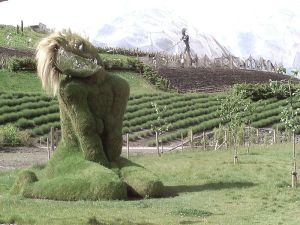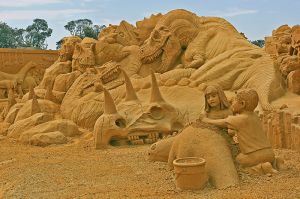What makes casting sculpture different from carving it? Well, first off the two make use of entirely different processes. Casting involves more of a chemical knowledge base, while carving requires a knowledge about tools and practical usage. For this article let us take a look at the opposing aspects, advantages and disadvantages of using these two methodologies.

Cast sculpture usually involves a series of liquid and powdered ingredients as well as a negative mould. The process is more complicated in theory, but much simpler in real-time. Casting resin usually starts from an original design, whether made in clay or copied from an existing model, a design must be able to be durable enough to withstand the moulding process. For resin casting, either plaster or silicone is pasted onto the model to replicate a negative side of it quite accurately. The mould is then set to dry for later. Before the casting, resin powder and other ingredients must be measured. Release wax must also be applied to the mould ends. Then a mixture of the casting investment is then poured into the mould and set to dry. When it has dried, the mould is either separated or chipped away to reveal the sculpture inside. Furnishing, painting and buffing then follow to finally complete the sculpture.
Carving sculpture on the other hand is much more simpler in theory but tedious in real-time. A sculptor usually makes use of a set of power tools, a water jet, and a hammer and chisel set. The process basically entails chipping away at a hard natural material such as alabaster, nephrite, or metamorphic rocks with beautiful raw color and patterns. The finished sculpture is then cleaned and buffed to bring out its natural tones.
Carved sculpture has natural colors while cast sculpture makes use of industrial paints, however cast sculpture can maintain a variety of curvaceous or liquid forms that would be hard to recreate in carved stone. Another aspect of comparison could be durability. Some people say that carved sculptures hold the natural durability of their stones while the lasting strength of cast sculpture depends mainly on the composition of the materials mixed into the investment. Cast sculpture also makes it easier for artists to create sculptural designs with better ease.
All in all there are many trade-offs to choosing either methodology, but both have their own uniqueness in the world of fine sculpture.






